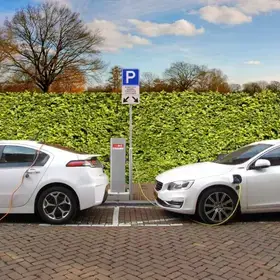In 1989 Gallup reported that 76 percent of Americans considered themselves environmentalists, by 2021 that had declined to 41 percent.
At the same time, poll after poll shows that about 70 percent favor public policies that control air, water and toxic waste pollution. What has happened is that the image of environmentalism and environmental advocacy itself has become entwined in the political polarization that has infected all aspects of American political life.
When the environmental movement became a mass phenomenon in the late 1960’s and 1970’s it was seen as a safe, consensus issue that contrasted with the bitter politics of the War in Vietnam. Americans might not understand the “domino theory” of contagious communism, but they could see smog and knew that a river should never catch fire. Protecting the planet was as American as apple pie.
The decline in the image of environmentalism took place for two reasons: the anti-regulatory ideology accelerated by the Reagan Administration, and the issue of climate change.
President Ronald Reagan was perhaps a moderate by today’s Republican standards, but he saw government and regulation as the source of America’s problems. People saw factories close down and thought it was due to environmental regulation.
While occasionally that happened, most deindustrialization was due to technological changes (such as containerized shipping, which made transporting goods cheaper) and lower-cost foreign labor. That was coupled with a transition from a manufacturing economy to a brain-based service economy. Today, in New York City, we no longer manufacture clothing — we design and market it, making far more money than we ever did when we made over 90 percent of America’s clothes.
But anti-government ideology led to the idea that regulation “killed jobs.” Actually, the opposite is true. Environmental rules inspired innovation in the auto industry and created a more efficient, high-tech, safer motor vehicle. But still, the right-wing mindset is that regulation stifled private sector initiative, and those socialist environmentalists were always pushing rules and telling people what to do.
Coupled with anti-regulatory ideology, environmentalists walked right into the culture wars by shaming users of SUVs, and condemning people that eat meat or wear fur. Ironically, the original environmentalists like Teddy Roosevelt were hunters and anglers advocating conservation so they could fish and hunt. To this day, America’s largest environmental group is the National Wildlife Federation, primarily comprised of people who hunt and fish.
Vegan urban environmentalists focused on climate change and living parsimoniously made no effort to understand the mobility needs of large suburban families with kids’ sports equipment to move around town, nor of rural folks who hunted and froze meat to get through the winter. Instead of seeking common ground from a shared love of nature, some highly visible environmentalists took the sanctimonious high ground of moral superiority.
Finally, there was the climate issue itself. Unlike air and water pollution, which were often created locally and could be seen and smelled by the senses, climate change was created globally. Moreover, its pollution was an invisible gas and its impact largely predictive rather than present.
Interestingly, young people may bring environmentalism back to the mainstream. Polling data indicates that they are more concerned about climate change and environmental degradation than their elders.
Even young Republicans show deep concern for environmental pollution. Where they differ from some young non-Republicans is that they see the solution to these problems in the private sector rather than the public sector.
The Biden Administration’s landmark environmental law, the poorly named Inflation Reduction Act, is actually in synch with the ideas of these young Republicans. Its subsidies and tax advantages are designed to stimulate private investment in the green economy. Judging by the billions of dollars already invested in electric vehicle and battery manufacturing, early signs indicate that this strategy is working.
It may require some re-branding, but the consensus around environmental protection may yet re-emerge in American political life.
This article was originally published in The Hill.
Views and opinions expressed here are those of the authors and do not necessarily reflect the official position of the Columbia Climate School, Earth Institute, or Columbia University



